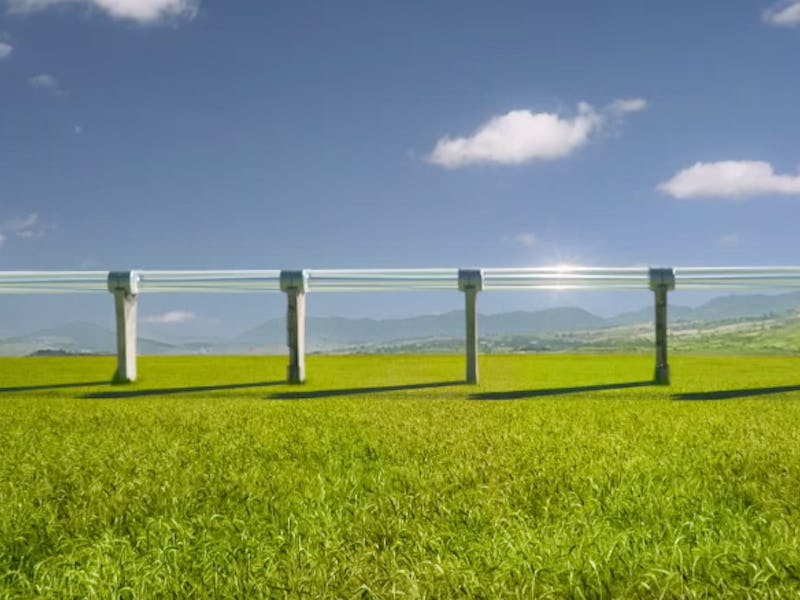It’s tough to say what makes the concept of hyperloop most attractive to the populous. Is is the vacuum tube through which the pods will travel? Is it the sheer speed of 750 mph? How about the ease it will create around travel? All lovely to think about. But looked over is how it might be self-sustaining, or even an energy creator.
Josh Giegel, president of Engineering and co-founder at Hyperloop One, the Los Angeles-based startup company that — publicly, at least — seems to be leading the way to realizing the hyperloop, tells Inverse that he envisions all sorts of connections the transportation system will make to the grid.
Ahead of Hyperloop One’s first-ever full-scale test this spring, Giegel said the electric energy that powers hyperloo could come from a variety of sources.
“We’re advertising and we really believe in a fully kind of green solution here,” he told Inverse. “There’s a number of different ways that we can tie into the grid, and also ways that we can help stabilize the grid.”
Giegel said Hyperloop One engineers are researching integrating solar or hydroelectric plants into the network’s power source.
The United Arab Emirates could be home to the first functional hyperloop, as the Middle Eastern country’s government looks for ways to slash its air pollution. A goal to reduce carbon emissions by 30 percent by 2030 means the country is ready to study the feasibility of building a hyperloop from Dhabi to Dubai, especially if it’s a system that would reduce the number of cars on the street.
“Not only is the hyperloop more energy-efficient, but we’re able to better utilize the renewables into that system,” Giegel explains. “It’s is far more efficient than just an internal combustion engine of a car, and can actually really reduce the emissions that Dubai is looking to achieve.”
When Elon Musk released his idea for the hyperloop in 2013 in the form of a whitepaper he called “Hyperloop Alpha,” he theorized that the entire system would be self-sustaining, thanks to solar energy.
“By placing solar panels on top of the tube, the Hyperloop can generate far in excess of the energy needed to operate,” Musk wrote then. “This takes into account storing enough energy in battery packs to operate at night and for periods of extended cloudy weather.”
It’s not entirely clear how exactly the hyperloop will make its own power, but at this point it looks like Hyperloop One is still seeing green.
